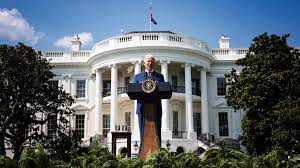The Presidential Pillars are aspects of American political culture that have developed over time. Whatever one thinks of the President, it is difficult to knots his/her personality into a enduring or obvious shape. The Presidential Pillars system serves as a framework for evaluating the performance of our Presidents. It is based on who, at the time, was best qualified to serve as a President.
Who was George Washington? Born on September 22, 1732, in a wealthy family in Virginia, him and his older brother Terrance round out the entire colonial administration. As Captain under then-Colonel John Adams, George led the federally appointed mission to study the Iroquois and the Pennsylvania Dutch. His September 22, 1754 farewell address before retiring from public office brought his career as a leader to a halt. He was criticized for wasting his time traveling to Philadelphia which was far from his family’s home town.
After retiring from public office, George Washington III issued the Instruction to Continental Congresses outlining the design and establishment of a University. This ongoing effort to educate students experienced in the field led to the formation of what was to become the first officially established University in the country, based in College Park, Maryland.
Not only was College Park the first university established, but it was also one of the first schools to offer a major in politics and policy. Another early education institution, the University of Cambridge, was founded 60 years later to continue the work of another early American institution, the all-male Harvard College.
All-America Selections
Continental Experiment began in 1892 as a college Conquest. This was the first college to include students from different professional paths such as the arts, business, and education. Students were put together to compete against each other for a scholarship.
The University of Maryland was founded in a way that highlighted students from the upper grades who had the most potential. The idea was also expanded to include students from lower grades who, due to their limited education, might not have had the chance to attend college.
In 1902, the College of Education in Natick, Massachusetts, implemented a Board of Trustees. This body included faculty, administrators, and funders that determined what research would be conducted and what course of study would be offered.
The work of the Board of Trustees led to the first steps toward the “Expert Panel” approach to educating students. The experts on education issues decided that each university should have a “Plan of Action” for international students. This plan created a structure under which the various universities could link to one another in order to share resources and services.
In 1918, the English Department of the University of Maryland was created. It was one of the first departments to focus on studying literacy primarily in English as a second language for all students. The English Department encouraged students to develop a love of language and to become citizens of the United States through their love of language.
Dibaca juga : Imagine No Thinking, No Hurting – Real Difference Between Lotto Today
The University of Maryland was one of the first universities to create departments focusing on investigations of environmentalism, energy, and the implications of those energies for governance.
Eco-friendly Technology
More than a hundred student firms have won money from state grants for green innovations. Not only are these technologies helping to save energy, but they are also helping to save the environment. Stainless steel eating utensils; automatic lavatories; solar-powered washing machines; light-emitting diodes; and more are some of the advances in U.S. manufacturing that have been won by U.S. students.
The University of Maryland was one of the first universities to include “green” architecture in its building design. The vision of leaders for the university involved using all available environmentally friendly building materials in every building. So, too, does the University of Maryland design for today’s demanding needs of students and faculty. According to Sierra concern, Danger Room, a new building will be constructed to house the office of the Dean of the School of Architecture, someone who has special expertise in educating students about the environment.
Another interesting feature of the University of Maryland’s designs is that they completely recycle used materials. A great example of such recycle is the building’s happenings. The classrooms, the gymnasium, the concert venue, and the academic buildings that are seen mostly on campus are all made up of shapes made from used and recycled materials.
